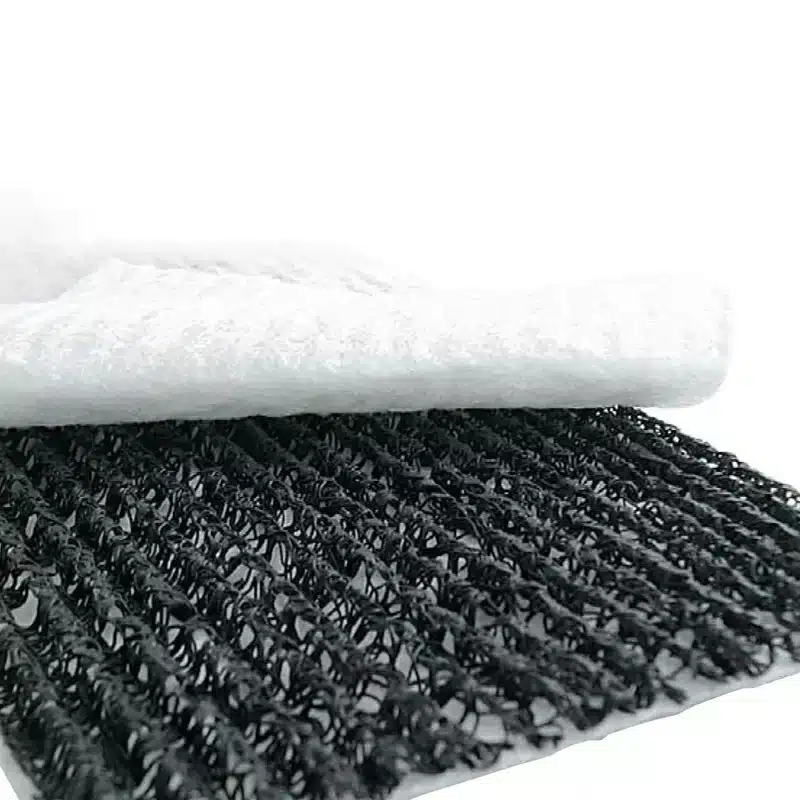+86-159 9860 6917
info@geofantex.com
geofantex@gmail.com
+86-400-8266163-44899
Geocomposite layers have quietly revolutionized infrastructure projects worldwide. In this article, we delve into the world of geocomposites, exploring their applications, benefits, and the technology behind them.

What is a geocomposite liner?
A geocomposite liner is a synthetic material widely applied in civil engineering, including landfill construction and environmental containment systems. It usually consists of a tri-planar geonet heat-laminated on both sides with a nonwoven geotextile. These integrated layers collaborate to serve purposes such as containment, filtration, and drainage.
What is a geocomposite drainage layer?
A geocomposite drainage layer is a crucial element in the geocomposite system, specifically devised for water flow control. It consists of a combination of one or more geosynthetics, specifically a geogrid, a geotextile, a geomembrane, and/or a geonet, with another material. This integrated structure enables efficient water drainage while safeguarding against soil particle clogging. These drainage layers find frequent application in landfills, retaining walls, and sports field construction.
What is an example of a geocomposite?
A common type of geocomposite includes a geotextile-geonet, geotextile-geogrid, geonetgeomembrane, or a geosynthetic clay liner (GCL). These composites consist of a layer of bentonite clay enclosed between two geotextile layers. They are commonly applied in landfill settings to create hydraulic barriers and manage seepage.
What is geocomposite used for?
Geocomposites are versatile tools in civil engineering and infrastructure projects, finding key roles in various applications, including:
- Landfill Construction: Geocomposite liners are vital for containing waste and preventing environmental harm.
- Retaining Wall Drainage: These composites manage water runoff behind retaining walls, bolstering their stability.
- Athletic Field Drainage: Geocomposites ensure efficient drainage in sports fields, averting waterlogging and promoting safe play.
- Road Construction: They enhance roads by stabilizing subgrade soils and controlling water.
- Environmental Protection: Geocomposites are employed in projects like ponds and lagoon liners to safeguard against contaminant migration into groundwater. Moreover, they are used for drainage from a basal layer in the case of embankments and for drainage behind retaining walls and/or bridge abutments, adding to their versatility.
In conclusion, geocomposite layers have become indispensable in modern infrastructure and civil engineering. Their versatility, ranging from landfill liners to drainage systems, makes them a valuable tool in ensuring the longevity and sustainability of various construction projects. Understanding their composition and applications is essential for any engineer or project manager seeking effective solutions in the realm of geocomposites.



Get Free Sample
We’ll respond as soon as possible(within 12 hours)






















